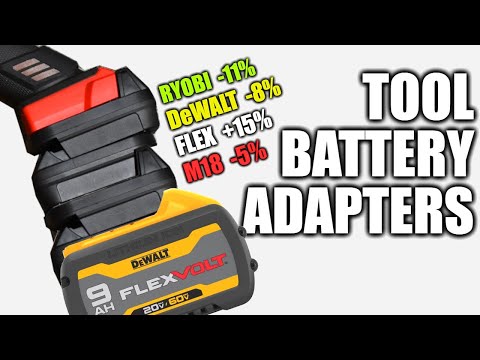There is only one reason why all the tool batteries on the planet have a different base to slide into, and that the batteries are so expensive, and that is so that once you buy a cordless tool you will be locked into using just that brand since they do not cross over. It’s been this way for decades, and I’m not bagging on the companies for doing this, it makes sense from a business perspective on multiple levels. The first is the aforementioned brand exclusivity, and the second is tool performance and longevity. Man, this is a blog item full of big words.
At any rate, the reason that it matters to performance and longevity is that if DeWALT rates their tools for their 20v battery and you run someone’s 16v in it instead it isn’t going to perform the same. Or say you put a DeWALT 20v on a Ryobi 12v it might not like that extra voltage at all and could shorten the tools lifespan by a lot. But let’s assume you have half a brain and want to use like voltage batteries from multiple brands, because you have DeWALT tools now but want a Milwaukee Impact gun and cordless ratchet and don’t want to buy more batteries and chargers. You can do this with battery adapters that have come onto the market in recent years. But some are 3d printed junk, some are 3d printed goodness, and some are actual injection molded pieces. Who knows if any of them are worth having though, since we’ve all heard horror stories.
Wonder no longer! Check out the TorqueTest Channel video below.
Video Description:
Our lifetime of TOOL RANKINGS https://torquetestchannel.etsy.com The Amazon adapter w/out issues: https://amzn.to/3EIkJSL Etsy guy: https://www.etsy.com/shop/3DPrintedAd… Today we dive into the wild world of battery adapters, available almost everywhere these days but how good or bad are they are turning your current brand’s batteries into workable performance on your new non-matching tool? Are they safe? Make less speed, more power? What? We try to wrap it all up in this episode for you.























